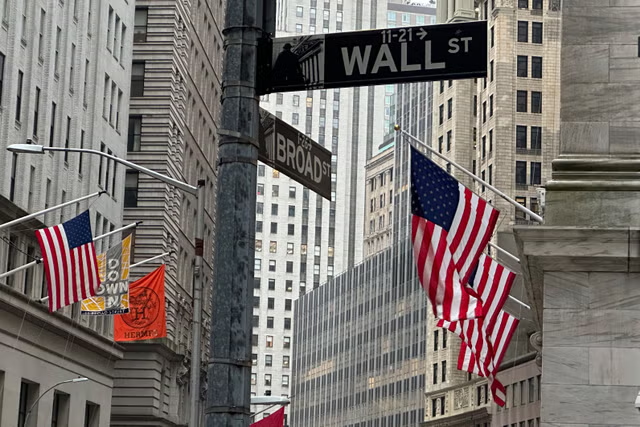With share prices plunging, high anxiety on Wall Street and talk of emergency rate cuts in the US, it has been a dramatic week for the markets – and the millions of savers who rely on them for an investment return.
What would have been a small bump of turbulence turned into full-blown panic as an obscure type of currency trading imploded on the other side of the world.
The result has left anyone from ordinary people dabbling in investing to large pension funds feeling sore and looking for ways to make back money in the chaos.
In the UK where recession fears have faded after last year’s downturn, some economists even started warning the upheaval was a threat to growth.
The root of the problem is an investing gambit that few will have heard of – the yen carry trade.
A complex way for investors to make money, it has led to the build-up of hundreds of billions of dollars in Japan.
“Basically, a lot of investors – some Japanese, many international – would borrow money in yen at a very low rate to invest in other countries where yields are higher,” says Andres Sanchez Balcazar, head of global bonds at Pictet Asset Management.
Anyone taking out a mortgage or loan in the UK or the US will be well familiar with the pain of interest rates hovering around 5pc. But in Japan you can still borrow money almost for free.
As a result, investors such as hedge funds and investment banks have taken out large debts there. They then exchanged the yen they borrowed into another currency where interest rates are higher, such as US dollars or Mexican pesos.
“A carry trade is essentially just trying to benefit from a higher interest rate in one area, funding it out of a low interest rate environment in another. Carry is just another word for interest really,” says M&G fund manager Tristan Hanson.
Typically, a trader then just lets the investments “sit and benefit from the short-term money market rate in each of these currencies”, Balcazar says.
“Some people juice it up a bit. In its more speculative version, it would be going into for example corporate or emerging market bonds or sometimes equities.
“Maybe some of it found its way into tech equities, which everybody thought would just go up forever.”
This means an investor with a bigger risk appetite may have borrowed money in Japan, exchanged it into dollars or pounds and used it to effectively lend money to Sainsbury’s, buy Ghanaian government bonds or purchase shares in Apple.
“That all goes fine and well as long as the yen depreciates,” says Balcazar.
Last month Donald Trump raised the temperature for investors watching the money roll in. He suggested in an interview that the dollar was too strong against China and Japan’s currencies, leaving US manufacturers struggling to sell their products.
“We have a big currency problem,” the former president who hopes to win the US election in November told Bloomberg.
Meanwhile, as central banks around the world started lowering interest rates, the Bank of Japan took everyone by surprise by raising borrowing costs from 0.1pc to 0.25pc, and signalling it was prepared to go further.
“The market is being triggered partly by deteriorating US economic data, but is reacting in a way that’s consistent with a much bigger deterioration than what we have actually seen,” says Sam Lynton Brown, head of global macro strategy at investment bank BNP Paribas.
“That much bigger move in the market can be well explained by positioning, and in particular, as it relates to Japan, an unwind of what’s been a very, very large trend.”
This resulted in a domino effect. It illustrates how seemingly separate events such as a remark by Donald Trump, a decision by Japanese technocrats and a few traders manning the desks in August contributed to stock market meltdown.
“The market was a bit complacent and sitting on a very large-sized carry trade. You just need a few of those people saying ‘I don’t want it anymore’,” says Balcazar.
“So they sell the foreign currency and buy the yen, they close their liabilities in yen and they close the investments in other currencies.
“It has this snowball effect because so many people are facing that way – in particular during the summer months [when] liquidity is not great. And so you end up having these very outsized market moves.”
The impact spread like wildfire through global markets, affecting people and institutions everywhere from the UK to emerging markets.
“There is a big chunk of the market that is invested in this carry trade in the US, in Europe and in emerging markets.
“All of a sudden, you start having people online that trade and your typical UK pension plan would hold for example equities or corporate bonds, then they’ll start to suffer from seeing from these falling equity markets,” Balcazar says.
This is echoed by Hanson at M&G.
“If your portfolio is down X amount, you’ve got to close positions because you don’t want to lose double. You get people all trying to do the same thing at the same time,” he says.
Analysts at ING estimate that cross-border loans from Japan had hit $1 trillion by March 2024, rising by a fifth since 2021.
As a result, it is difficult to say how much of the yen carry trade is yet to be unwound. There could well be more pain to come both in the short and long term.
“The market is going to test the nerves of people over the coming weeks. I don’t think it’d be plain sailing, because when you get these volatility events, they tend to linger for a while, and they’re unsettling for people,” Hanson says.
He has been buying Japanese and Korean stocks this week in a bet that the sell-off “was very large and not really grounded in good fundamental reasons”.
“When you have a big market shock like we’ve had, it’s foolish to immediately call the end of it because moves can become self fulfilling. We’ve had a really big shock,” adds Brown at BNP Paribas.
He adds that investors are invested in many other types of similar trades, for example, in the Chinese yuan.
“These are all effectively the same things. They do well when volatility is low, they do bad when volatility is high,” he says.
The fear gauge on Wall Street – a measure of market volatility – hit a four-year high on Monday.
Meanwhile, most traders expect we are in not only for a more volatile summer but a more volatile decade.
Geopolitics, fluctuating inflation and the trillions of pounds needed to finance the net zero transition all make for a more uncertain world.
But if anything, such carry trades will become more common in “this new era of higher and more diverging interest rates”, says Balcazar.
Higher rates force investors to find creative ways to generate returns that are better than just sticking the cash in the bank at a profitable rate.
“Interest rates tend to be fairly low in Asia, whereas they tend to be fairly high in the Western world and in particular in the US and Latin America. That really invites the carry trade,” he says.
“The other element is that this is a year of elections. Elections provide very good volatility for these carry trades to sometimes get unwound.”
In other words, the yen carry trade may become a lot less obscure in the years ahead.
Disclaimer: The copyright of this article belongs to the original author. Reposting this article is solely for the purpose of information dissemination and does not constitute any investment advice. If there is any infringement, please contact us immediately. We will make corrections or deletions as necessary. Thank you.



